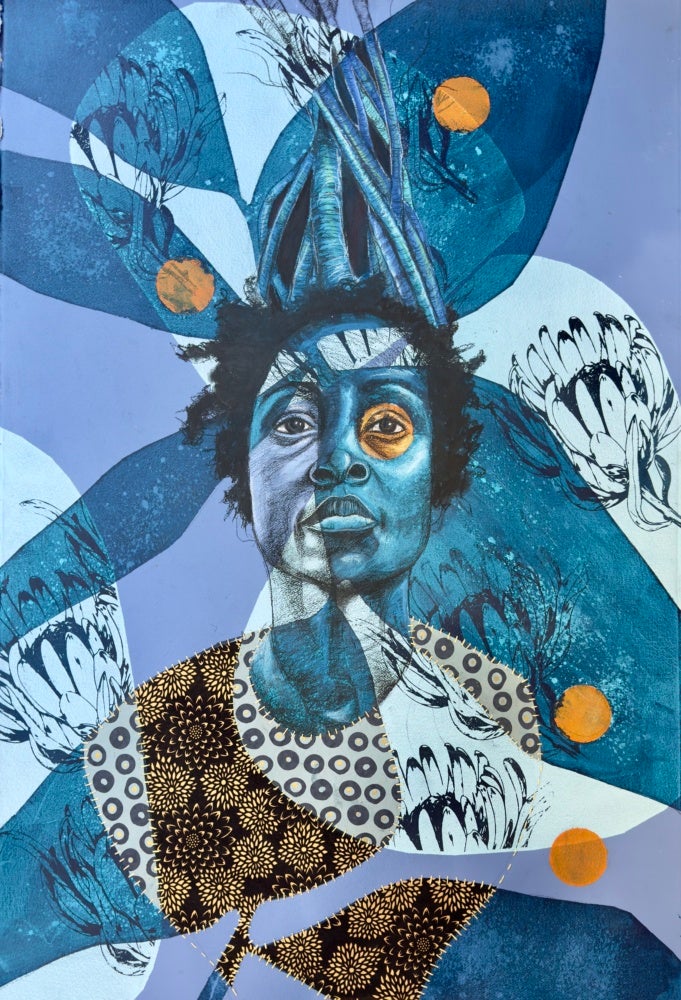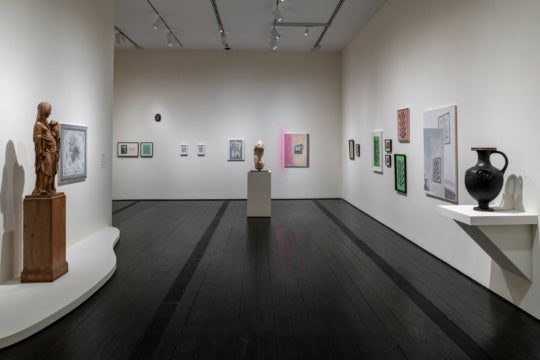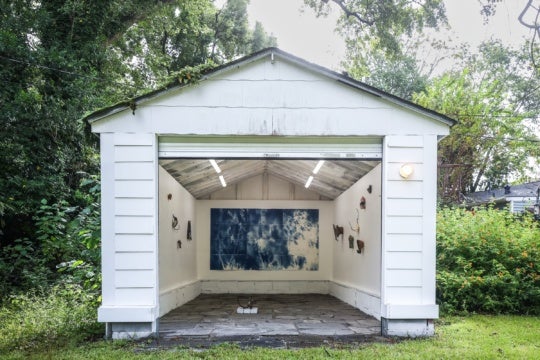
In her printmaking practice, Houston-based artist Delita Martin carefully crafts stories of connection, transformation, and transcendence through her depictions of Black women. Martin describes herself and her artistry as a vessel through which she represents Black women in their complexities and their wholeness. Her subjects are presented in manners in which they aren’t often seen—vulnerable, sacred, beautiful, and powerful. I visited Martin in her studio outside of Houston to discuss nature, ancestral and spiritual connections, and her method of using the form of the human body to share untold stories.
This interview was edited for length and clarity, and was originally published in print for the Atlanta Art Fair 2025 broadsheet publication, taking place from September 25 to 28, 2025.

Zahrah Butler: I love the way you craft a visual narrative with nature’s iconography. I’m thinking of the different kinds of birds, plants, and flowers you transform into patterns or use as accents within a piece. In my encounters with your work, these motifs have functioned as narrative tools to speak for the women in your work, and they have created connection through familiarity when I’m able to recognize specific flora and fauna. Can you talk about where these representations of nature come from?
Delita Martin: I met my mentor, Harvey Johnson, as a student at Texas Southern University. He considered it an artist’s responsibility to craft artwork into vessels with a transformative, magical ability to tell compelling stories to your audience. To do that work, he taught me to have a strong understanding of what I depicted, to have a deep connection to what I create.
I believe there are little seeds planted throughout life. It’s necessary to ask the questions that help uncover what these seeds mean for your connections to your environment, community, and upbringing. I grew up surrounded by gardens and all kinds of farm animals. I often reflect on getting up early in the morning to pick fruits and vegetables with my grandma, my mama, and other women in my family. The seeds of these experiences working with land, tilling the earth, and being engaged with the elements of my environment have bloomed into what you’re recognizing in my work with the integration of birds, plants, and flowers. These seeds have formed the connections with plants and animals that allow me to do the transformative work my mentor described. Those memories and connections allow me to craft these magical things.

ZB: I want to keep talking about your connections to the Black women in your life. In broader culture and media, it can feel difficult to encounter portrayals of Black women that represent their vulnerability in a gentle, respectful manner. Your work accomplishes this beautifully. When I look at your work, I see my own mother and grandmothers within the women’s faces and figures, represented as deeply sacred, spiritual individuals. Do you have this in mind when you work? If so, what tools do you use to build connections between your work and your audience?
DM: I don’t want to prescribe a particular sentiment or experience for people to have when they view my work. As an artist, I had to figure out how to visually represent liminal, spiritual spaces without relying on the icons and faces of specific faith practices. I found myself turning to the guiding philosophies of different Indigenous African religions to represent spirituality through nature, color, texture, and patterns. This is done by looking at the crossroads and liminal spaces where colors and patterns can either come together perfectly or be in conflict with one another. That’s just life; sometimes things are smooth, sometimes they’re tense. When I put these layers together, that’s what I get.
When it comes to having female subjects, I portray them because I feel guided to tell stories that more immediately echo those of Black women. Outside of this, I’ve seen men interact with my work and immediately understand that my narratives aren’t only meant to be received by Black women. They’re meant for everyone. They tell stories that connect with people regardless of their background or identities.





